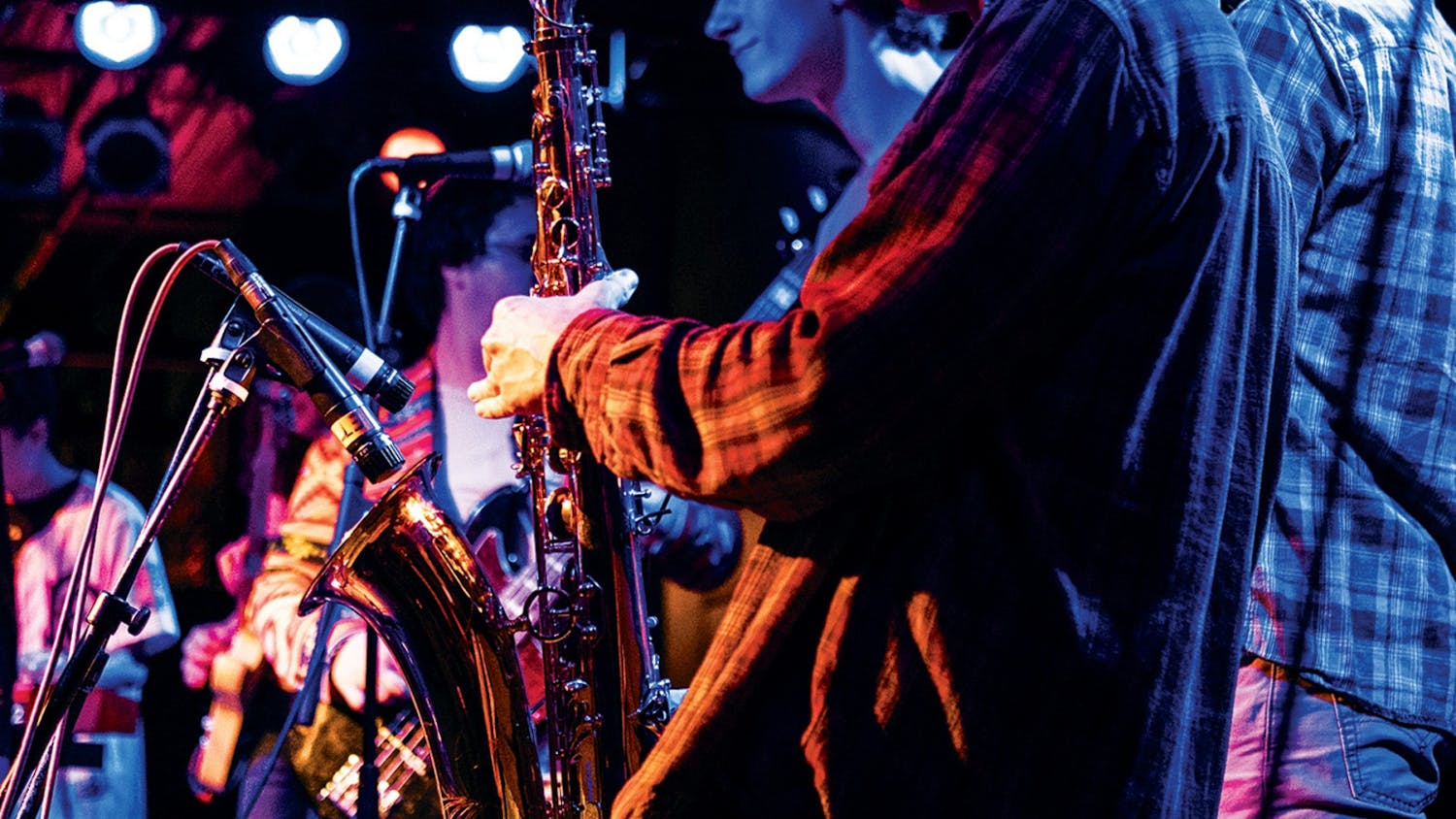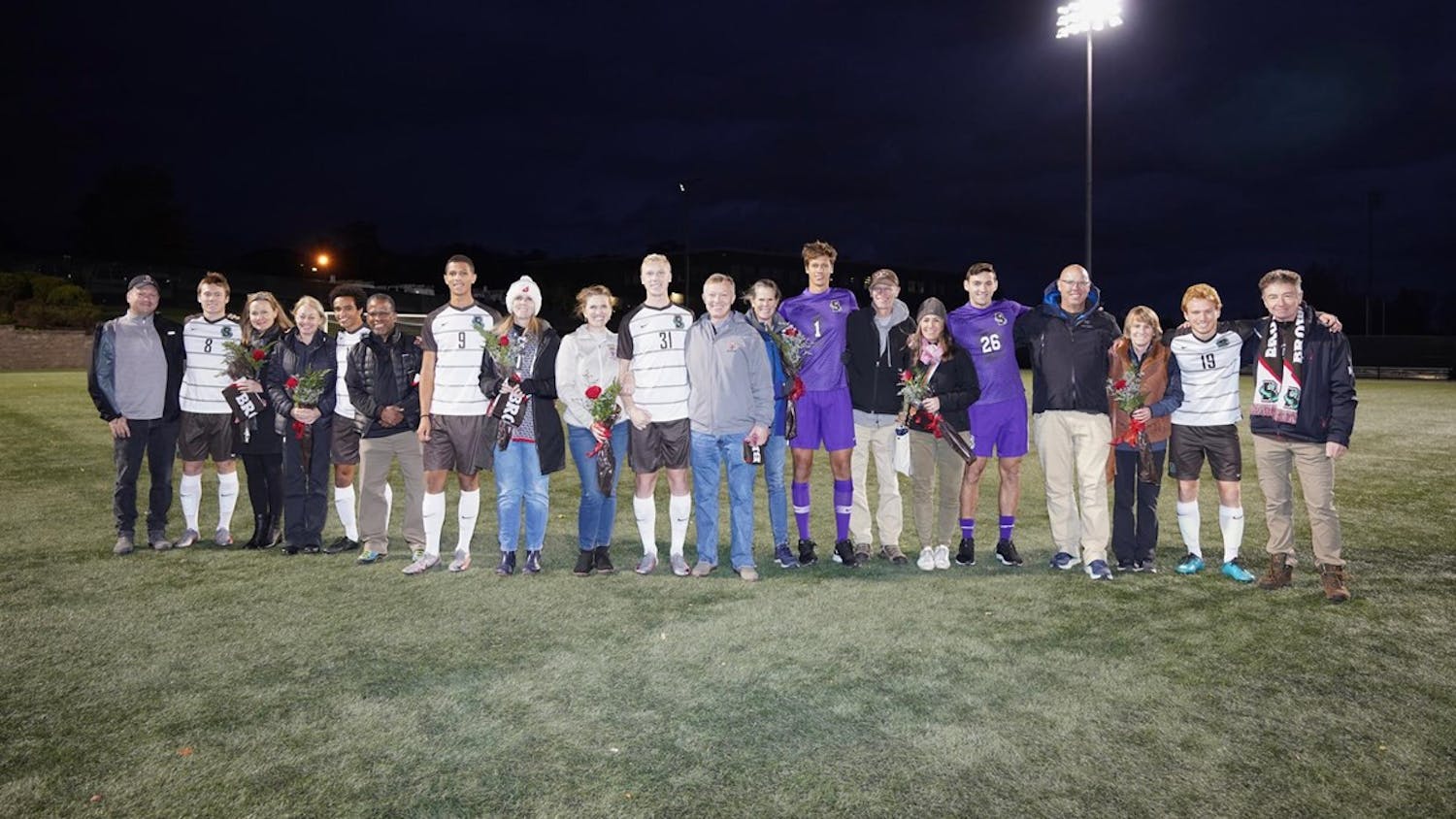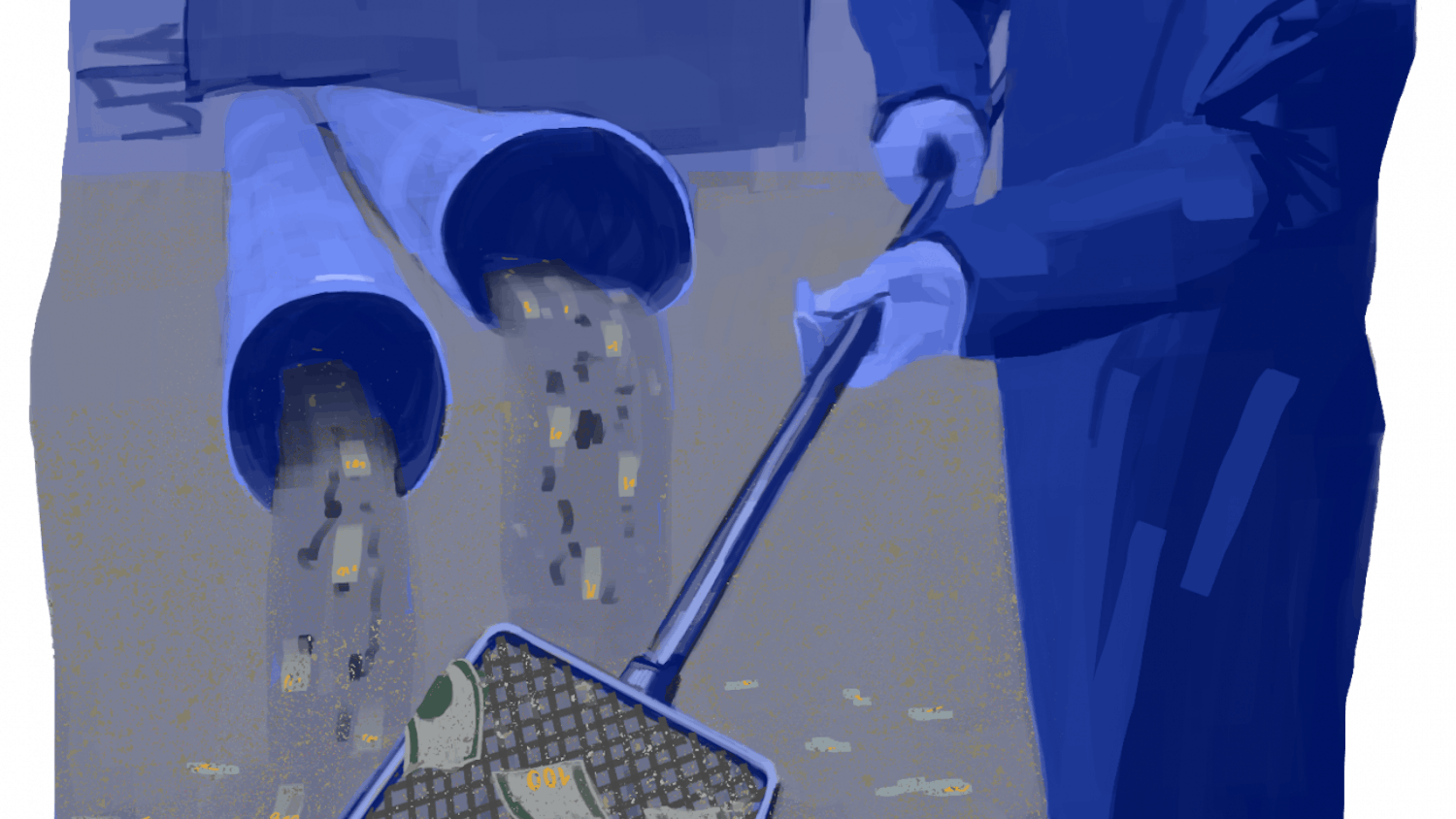Gravity and inertia don't figure into most toddlers' calculations as they meddle with their mashed potatoes. But for participants in this year's Edible Car Competition, playing with food means fun with physics.
In Barus and Holley last week, Brown's Society of Women Engineers and the Division of Engineering pitted 20 teams against each other to assemble a functional, stylish and entirely edible car in just one hour.
But this year's contest, only the second ever, included Brown students and faculty — and Bob Blumer, host of the Food Network show "Glutton for Punishment," which airs in 30 countries and chronicles his adventures in the world of culinary competitions.
"I have five days to learn a particularly daunting skill that revolves around food before taking on professionals," Blumer said — professionals who, in this case, were Brown's own engineering students.
Edible engineering
Last Friday, the teams first scrambled to divvy up a buffet of potential car parts, including pumpkins, Life Savers, zucchini and rice cakes. Unlike the first edible car contest, held in spring of last year, the cars could only utilize the ingredients that SWE provided. While this meant there were no turkey-mobiles, as one team created in 2008, the contestants found innovative methods to turn vegetables into vehicles.
The day of the contest, Blumer and his teammates, Sam Rabb '10.5 and competition creator Julie Sygiel '09, gathered in Barus and Holley's foyer with their competition. The teams sported names like the Gourd Accord, Bread Man Walking and Squash the Competition and included competitors as unusual as 7-year-old Peter Curtin, working with his father, Professor of Engineering William Curtin.
At the end of an hour spent drilling, carving, chopping and nibbling, the teams carried their creations outside for judging and a test run. One member of each team held their car at the top of the specially built ramp, releasing it at event organizer Holly Lauridsen's '11 mark and watching it roll, tumble or crash.
The winning team — Pumpkin Express — was the first to launch its culinary creation. Its entry rolled a full 174 feet to Brook Street, stopping just in time to avoid being crushed by two buses that pulled up as it approached the street.
But the team's victory was not without controversy — a section of an apple attached to the car fell off on the ramp and was discovered after the excitement of its success.
Lauridsen and the contest's judges said according to the rulebook, the car's distance was determined by the distance the first piece — in this case, the apple — traveled. After the ruling was made, the team's members looked up the rules.
"We printed out the official rules and saw that the rules stated that the body and the wheels had to remain intact the entire time," said Margaret Merritt '11, one of the members of Pumpkin Express. Because the apple was on the car's axle, not the body or the wheels, the vehicle's full distance qualified as part of its score.
The runners-up fell short by yards — the Curtins came in second, and Blumer's team, the Vegi-Mights, came in third with a car that consisted of a zucchini body, wheels made of oranges and squash and even a broccoli driver.
Cooking up a car competition
The competition, one of two "extreme food" events put on by SWE, was the brainchild of Sygiel, who helped create the group's first event in fall 2007: a gingerbread house competition that challenged participants to construct the house that could support the most weight.
After the event's success, Sygiel began thinking of other novel ways to incorporate fun into engineering events, she said.
Though Sygiel entertained a variety of possibilities, including a paper airplane folding contest, she ultimately found inspiration in her childhood memories.
"The University of Kentucky hosted open houses and invited kids to participate in all these fun engineering events," she said. One of her favorites, she recalled, involved making miniature cars from food — last year, a revved-up version rolled onto College Hill for the first time.
For this second installment, SWE's leaders — headed by Lauridsen — placed a new emphasis on environmental consciousness and social awareness.
SWE bought most of the food through the online marketplace Goodshop, which in turn donated a percentage of its profits from the purchase to Amos House, a local social services agency.
All the scraps are being used as compost at the Urban Environmental Lab, Lauridsen said, and as food for Assistant Professor of Engineering Kelly Pennell's chickens.
"We chose specifically to use food as our medium because engineers in this day and age have to think about sustainability," Sygiel said. "If you build cars out of wood and metal and plastic, what do you do with the material?"
And unlike plastic, the entirely edible cars are biodegradable. "It was part of the thinking behind the event that there should be some other destination besides a dumpster," Pennell said.
Hitting the books
The "Glutton for Punishment" team stumbled across the edible car contest in a Google search for "food competitions," Lauridsen said. Producers contacted the University in April, she said, and preparations for the episode's filming have been underway ever since.
Blumer and the crew, which for this episode included modern culture and media concentrator Zack Caldwell '10, were on campus the week leading up to the event, filming segments that Lauridsen said "highlight Brown's sustainable food use,", including a segment filmed in the kitchen of West House, a Brown program house and food co-op dedicated to environmentalism.
The Food Network star began his quest at the beginning of the week by building a car to serve as a "benchmark" of his initial skill, Pennell said.
"With no information from me, he had one hour to build a car (out) of produce," she said. "It was an utter failure."
"It lost a wheel on the way to the ramp and was in pieces all along it," Lauridsen said.
Blumer then immediately "hit the books," spending 13-hour days filming and learning the complex engineering behind a winning car from Pennell and Interim Dean of Engineering Rodney Clifton, Lauridsen said. Blumer also learned pumpkin-carving techniques from celebrated carver Richard Alford and spent a day testing car models with the members of Brown's Formula Society of Automotive Engineers race car team.
A recipe for success
The main challenge to crafting a successful vehicle is to make the wheels spin and support the car at the same time, Lauridsen said.
Sygiel advises having as much weight in the car's body as possible without breaking an axle. From her own experiments, Sygiel said, she has found that carrots make good axles, but "you have to chew them down to have the same diameter all the way around."
Bundling fettuccine is another tactic Sygiel suggests, but as Blumer discovered while experimenting with different models, vegetable wheels effectively "cook" the pasta they surround, producing soggy, weakened axles.
Professor Emeritus of Engineering Barrett Hazeltine, Professor of Engineering Allan Bower and Adjunct Lecturer in Visual Art Ian Gonsher judged the cars on appearance, speed and distance traveled.
"It's easy to make it look cool," Lauridsen said. "Making it function is more of a challenge, at least in engineering,"
"All the theory and practice doesn't do anything," Blumer said, when it comes time to actually build.
But Blumer's coach thinks his experience as a chef served him well in dishing up a functioning vehicle. "People overlook h
ow creative engineers are," she said, "but it's one of our most important skill sets."
ADVERTISEMENT




